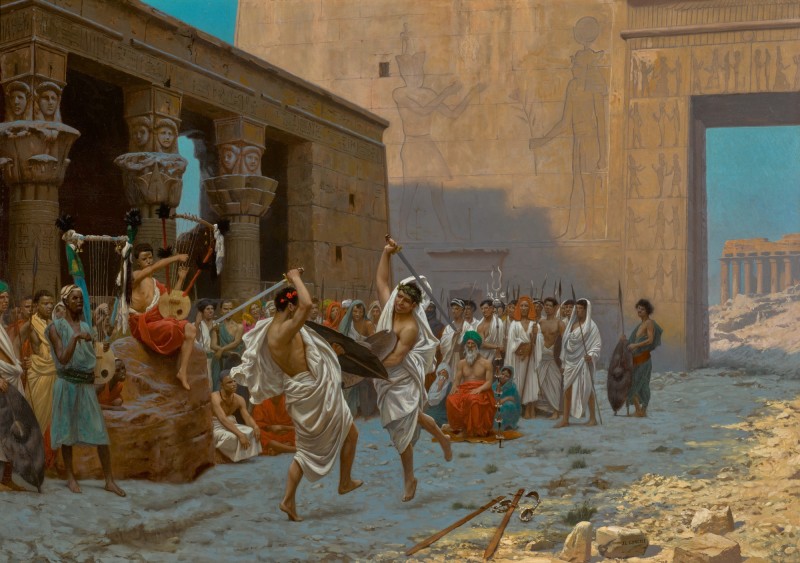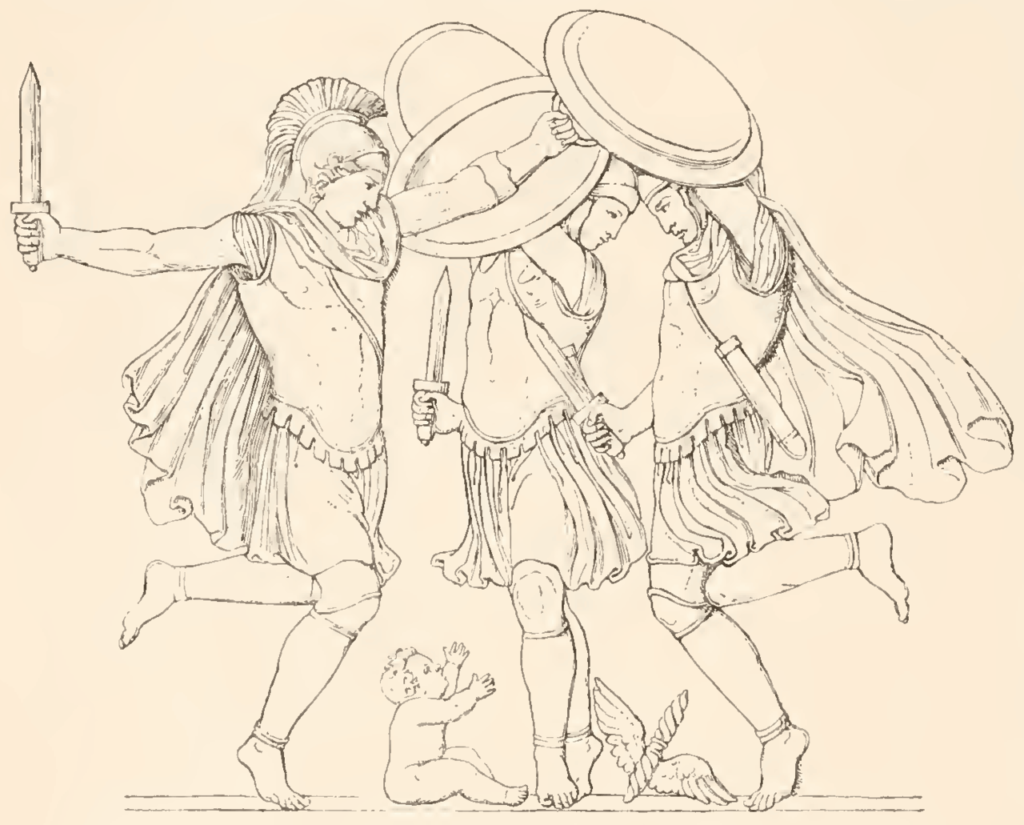
Pyrrhichios was the ancient Greek war dance that originated from the mythical Couretes deities, who danced to save the newborn Zeus from the hands of Cronus.
The ancient Greek war dance has survived through the ages. It can be traced back to mythology and through to a specific war dance of the Pontic Greeks that continues to be performed traditionally to this day. The dance goes back ages ago and is associated with Zeus, the ruler of all gods.
Hesiod’s epic poem Theogony has been used as the source for Greek mythology. In the poem, Zeus was the son of Cronus and Rhea. Cronus had murdered his father, Uranus, due to the orders of his mother, Gaea, to ascend to the throne of the gods.
However, according to a prophecy, he would, in turn, be murdered by one of his own sons. Cronus ate all his children so the prophecy would not be fulfilled. Hence, Rhea had to hide Zeus from her husband’s wrath.
One of the myths about Zeus as a newborn is that Rhea hid him in a cave on Crete, where the mythical deities, the Couretes, danced the Pyrrhichios around the infant Zeus to protect him. They were fully armed while dancing and attempted to cover his cry from Cronus, who was searching for him.

The Pyrrhichios war dance is as old as Archaic Greek mythology. It is a dance, still performed to this day, that evolved from the ancient Pyrrhichios and came to be adopted by the Pontian Greeks of Trebizond (Τραπεζούντα) in the Black Sea. Millennia ago, the dance was also part of military training.
Pyrrhichios in Ancient Greece
According to Aristotle and Homer, the Pyrrhichios was an armed dance, which was performed by children, men, and women alike. It featured side turns, backflips, jumps and dips, and offensive and defensive moves, as the dancers also utilized their voices in a lively manner. Homer refers to Pyrrhichios, describing how Achilles danced it around the funeral pyre of Patroclus.
The son of Achilles bore two names. Pyrrhus was his given name as an infant, but he later came to be known as Neoptolemus. After Achilles was killed in battle at Troy, Pyrrhus came to Troy to take his father’s place. His greatest exploit was killing Eurypylus, leader of a force of Hittites that had come to assist the Trojans. After slaying Eurypylus, he performed an exultant victory dance.
Plato wrote that Pyrrhichios was a divine gift from the gods to humans, and he divided it into two types, namely “the peaceful” and “the warlike.” He even mentioned it was part of the cult of Dionysus.
Strabo stated that the first to partake in the war dance was Achilles’ son, Pyrrhus, because he was happy to have killed Eurypylus, while some argue it was danced by the Courete Pyrrhichos over the body of Patroclus in mourning him.
In ancient texts, it is mentioned that the dancers were lined up in military formation, holding a shield and spear while imitating the movements of soldiers in battle.
The Athenians danced the Pyrrhichios in the Panathenaea, and the Spartans danced during battle. A text by Xenophon mentions a celebration that the inhabitants of Kerasounda organized in 400 BC in which they danced the Pyrrhichios.
The ancient Greek war dance was very popular in Sparta, where it was a part of training. Young men who were being hardened for battle would first have their training session where they practiced their skills with the weapons of war, and then, when that was over, they danced.
A piper played the aulos, which had a timbre not unlike bagpipes, and the young warriors formed a line and danced a quick, light dance step. While they danced, they sang songs. The Pyrrhichios was most likely not part of the weapons training but was done to enhance the nimbleness of the warriors.
The Dance of Pontian Greeks
Writer and politician Konstantinos Papamichalopoulos traveled to Pontus and watched Pontians dancing the Pyrrhichios in their traditional black attire. They also refer to the dance as Serra after the river that runs through the area. He described the dance in his book, Touring Pontus, as follows:
A war dance, definitely. The way the body turns to all directions, the closeness of the dancers to each other, the violent turns towards the floor, the beats of the feet and the blows of the arms, the contractions of the muscles of the whole body, the excitement that overtakes the dancers, the cheers, the shouts, the emotions transmitted everywhere like a spark, all these exhibit such originality and such glamor in this complex dance that it would be rightly possible to rank the Serran dance among the most famous dances in the whole world…”
Over the years, the Pontians continued to dance this intense war dance, which is considered the most authentic version of the ancient Pyrrhichios. The dancers are men dressed in black attire, and they are armed. They stand in a straight line holding hands with their heads held high. Gradually, the rhythm of the dance speeds up. Despite the changes it has undergone over time, the dance continues to excite those who watch it.
See all the latest news from Greece and the world at Greekreporter.com. Contact our newsroom to report an update or send your story, photos and videos. Follow GR on Google News and subscribe here to our daily email!



